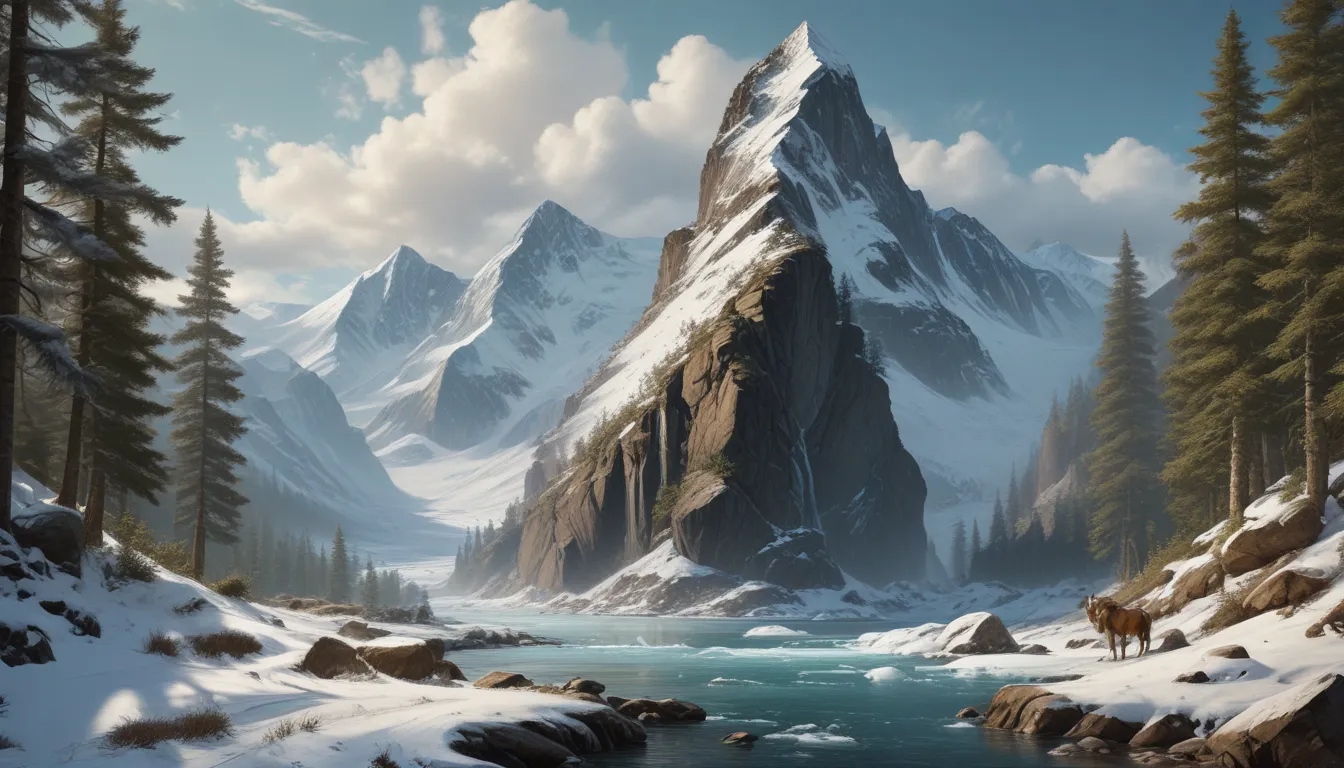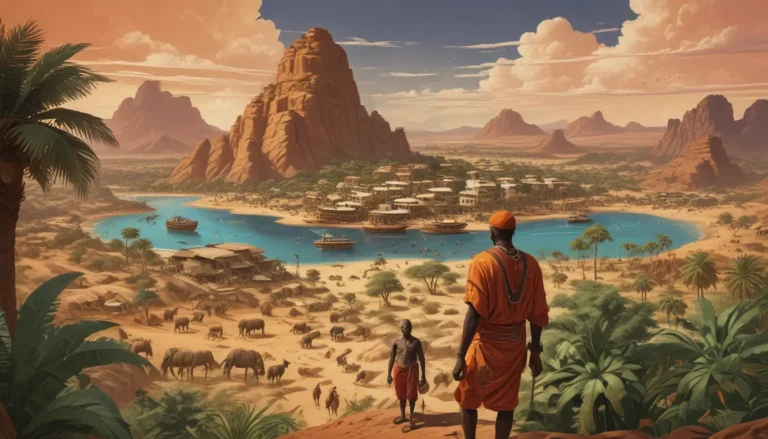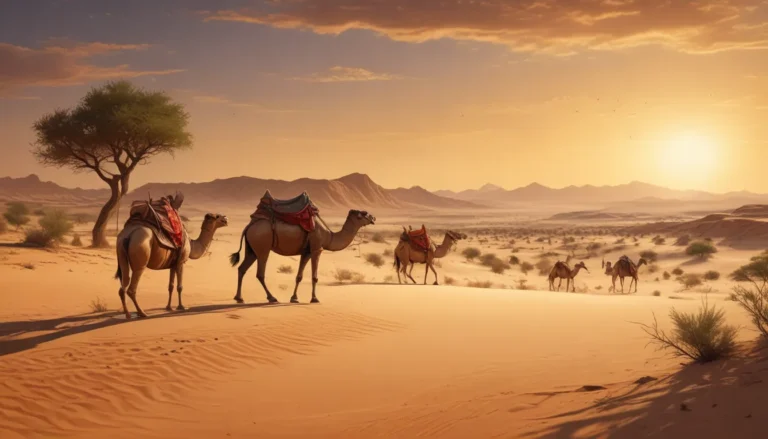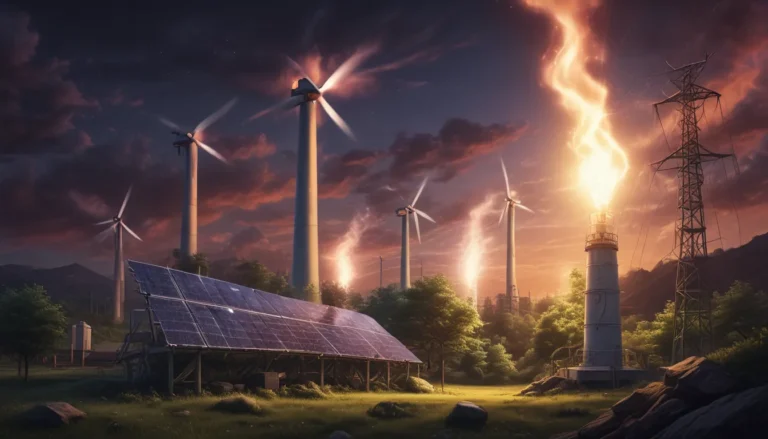A Note About Images: The images used in our articles are for illustration purposes only and may not exactly match the content. They are meant to engage readers, but the text should be relied upon for accurate information.
Tundras are some of the most captivating and distinctive ecosystems on our planet, offering a glimpse into the resilience and adaptability of life in extreme conditions. These expansive, cold, and seemingly barren landscapes in the Arctic regions of the world are teeming with a rich diversity of plant and animal species that have evolved to thrive in harsh environments.
In this article, we invite you to delve into the enchanting world of tundras as we uncover 19 astonishing facts that will ignite your curiosity and appreciation for these remarkable habitats. From the bone-chilling temperatures and remarkable biodiversity to the astounding adaptations and natural phenomena, the tundra holds a wealth of secrets waiting to be discovered. So, fasten your seatbelt and prepare to embark on a journey into the icy wilderness as we unravel the mysteries and marvels of the tundra.
Key Takeaways:
- Tundras Are Ecosystems Teeming with Life: Contrary to popular belief, tundras are not desolate wastelands but are filled with diverse plants and animals that play a crucial role in regulating Earth’s climate.
- Tundras Are Essential for Scientific Discovery: These frozen landscapes offer invaluable insights into climate change, permafrost dynamics, and the adaptations of living organisms, making them a treasure trove for researchers.
The Tundra: Nature’s Deep Freeze
Tundras hold the title of being the coldest biome on Earth, with average temperatures seldom surpassing 10 degrees Fahrenheit (-12 degrees Celsius) at their warmest.
Despite their association with the Arctic, tundras can also be found in certain regions of Antarctica, showcasing their global presence and unique characteristics.
Life Finds a Way in the Tundra
The short growing season in tundras poses a challenge for plant life, leading to a brief window of opportunity for vegetation to adapt and flourish in the harsh climate.
Permafrost, or permanently frozen soil, defines tundras and presents obstacles for infrastructure development due to its extensive depth and frozen nature.
The Diverse Flora of Tundras
Far from being barren, tundras host a variety of plant species, including mosses, lichens, grasses, and low-growing shrubs that have adapted to survive in extreme environments.
Fauna’s Remarkable Adaptations
From the thick fur of Arctic foxes to the hooved feet of reindeer, tundra animals exhibit unique features that enable them to thrive in the challenging conditions of their habitat.
Migration is a common survival strategy among tundra animals, allowing them to seek better resources and shelter during the winter months.
Tundras: A Haven for Migratory Birds
Throughout the summer season, tundras become bustling hubs for a multitude of bird species like snow geese, Arctic terns, and golden plovers, providing breeding grounds for these avian visitors.
Climate Regulation and Permafrost
Tundras play a critical role in global climate regulation by storing substantial amounts of carbon in their permafrost, although the thawing of this frozen soil poses risks by releasing greenhouse gases.
Witnessing the Northern Lights
The Northern Lights, or Aurora Borealis, are a stunning natural phenomenon visible in tundra regions owing to their proximity to the polar regions and optimal viewing conditions.
A Sparsely Inhabited Landscape
Due to the inhospitable environment and scarcity of resources, human populations in tundra regions are typically small, with indigenous communities exhibiting a profound cultural connection to these lands.
Preserving Tundra Ecosystems
National parks such as Denali National Park and Páramo de Ocetá safeguard tundra ecosystems and their unique biodiversity, allowing visitors to appreciate their beauty and significance.
Tundra Wildlife: A Living Marvel
From the iconic polar bear to the elusive Arctic hare, tundras host an array of captivating animal species that have evolved to thrive in extreme conditions.
Insects Flourish Despite Adversity
Tundras may have limited vegetation, but they attract a plethora of insects during the brief summer season, providing a breeding ground for various insect species.
Nutrient-Poor Soils Challenge Plant Growth
The nutrient-poor soils of tundras, coupled with low temperatures and short growing seasons, present obstacles for plant development and vegetation dynamics in these regions.
Human Impacts and Conservation Challenges
Activities like oil and gas extraction pose significant threats to tundra ecosystems, disrupting their delicate balance and causing long-lasting negative repercussions.
The Resilience of the Musk Ox
The Arctic tundra is home to the iconic musk ox, a majestic mammal known for its resilience in withstanding extreme cold and its striking physical features.
Climate Change: A Looming Challenge
Tundras face escalating risks due to climate change, including permafrost melting, alterations in animal migrations, and disruptions to the intricate balance of these fragile ecosystems.
Tundras: A Scientific Playground
Scientists utilize tundra regions as natural laboratories to study climate change impacts, permafrost dynamics, and the adaptive strategies of plant and animal species, offering crucial insights into our evolving planet.
These 19 astonishing facts shed light on the captivating and fragile nature of tundras, emphasizing their significance in our planet’s ecosystem. As we grapple with the repercussions of climate change, safeguarding and cherishing these extraordinary landscapes for future generations becomes increasingly vital.
Onward to the Untamed Wilderness
The tundra beckons with its enchanting beauty and remarkable resilience, inviting us to explore its icy realms and uncover its hidden marvels. From the frozen majesty of the Arctic to the distant allure of Antarctica, tundras captivate with their untamed wilderness and unique inhabitants. Prepare to be spellbound by the tundra’s mystique as you embark on a virtual expedition into its heart.
FAQs
Q: What is a tundra?
A: A tundra is a biome characterized by frigid temperatures, a brief growing season, and a lack of trees, predominantly found in Arctic and Alpine regions.
Q: How cold does it get in the tundra?
A: Temperatures in tundras can plummet as low as -50 degrees Fahrenheit (-45 degrees Celsius) during winter months.
Q: What plants thrive in tundras?
A: Tundra vegetation includes resilient species like mosses, lichens, and small flowering plants that have adapted to harsh conditions.
Q: What animals inhabit the tundra?
A: Common tundra animals include caribou, polar bears, Arctic foxes, musk oxen, and diverse bird species such as snow buntings.
Q: What is permafrost?
A: Permafrost is a layer of permanently frozen soil in tundras that impedes deep-rooted plant growth and contributes to ecosystem stability.
Q: Can humans inhabit the tundra?
A: While some indigenous communities have adapted to living in tundras, the environment’s extreme cold and limited resources present challenges for human habitation.
Q: How is climate change affecting tundras?
A: Climate change is altering tundra landscapes, leading to permafrost thawing, shrinking ice caps, and disruptions in animal migration patterns with far-reaching ecological consequences.
Embark on a journey into the sublime tundra and unravel the mysteries and wonders of this extraordinary biome, where life flourishes in the face of adversity. Explore more about tundras, their captivating features, and the fascinating adaptations of their inhabitants in our related articles. Let the allure of the untamed wilderness of the tundra inspire you and instill a profound appreciation for the delicate balance of nature in these remarkable ecosystems.






